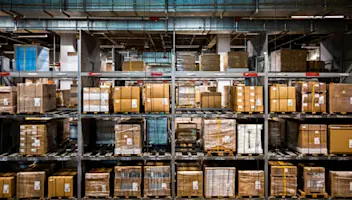Better Inventory Management Means Better Business
Better Inventory Management Means Better Business
Better Inventory Management Means Better Business
13 Mai 2020
Ken Weygand
This spring season has been a whirlwind. We don't need to tell you all the ways that life has changed since the novel coronavirus entered the picture. You've experienced it firsthand—both personally and professionally.
In overcoming these challenges, maybe you realized some things about your business. Perhaps you recognized that your employees are more adaptable than you ever knew. Or that you're well-equipped to deal with the fluctuations of customer demand. Maybe you found some extra downtime to reflect on your business practices. And perhaps you noticed that your inventory management practices could be more efficient or your forecasts a little more accurate.
When it comes to solid inventory management and forecasting, a consumer goods enterprise resource planning (ERP) solution can make all of that calculating, tracking and counting easier. Without an ERP, the process of tracking inventory is manual, labor-intensive and highly susceptible to human error.
With a solution to help you accurately count and track the inventory you do (and don't) have in stock, you will be able to pull data quickly and use historical data within the system to find the various trends and patterns in your inventory.
Leverage Historical Data to Make Informed Decisions
Knowing your sales history from month-to-month and year-to-year is valuable in ensuring you maintain success as a business and promoting accuracy when fulfilling the inventory needs of your customers.
You don't want too much inventory—it takes up valuable warehouse space, you risk the product spoiling or becoming outdated and thus losing money. It also ties up your cash flow. But you also don't want to become too lean and not have enough product to meet your customers' needs.
An ERP made explicitly for distributors and importers will help to guarantee that you have just the right amount of inventory to meet demand. The data in the system aligns those numbers and acts quickly in case something changes or an error occurs to continuously and successfully meet customer demand.
You may need to act quickly, for example, when the ex-factory date changes and will be one month later than initially planned. As soon as the ERP is aware that the date has been pushed by a month, it will react in real time.
If that inventory is needed to fulfill the forecasted demand three months from now, the ERP will notify you that there is a problem and you're not going to fulfill customer orders. There could be several other reasons causing inbound goods to be delayed—storms at sea delaying the vessel, container held up in customs, work strike at the port, etc.
During certain seasons, for some importers and distributors, there are upticks in demand for specific products. Beach towels are in higher demand in the summer, whereas mittens are in higher demand in the winter. With seasonal inventories, an ERP helps ensure you have enough product to meet demand. Leveraging the data from prior years will inform you when you need to begin ordering more of those critical products. These patterns and trends ensure you order more when needed to meet these higher periods of demand.
As you look to add new products to your warehouse or new suppliers to your list of vendors, you can leverage the data within your ERP. Guesswork is eliminated from the equation, and the data within your ERP enables you to make accurate projections when it comes to the unknowable future.
With an ERP, you're able to leverage the historical information from a similar product or partner that's already in your system and let that data help you make informed decisions about how to move forward.
Better Manage Long-Lead Times
A lot goes on in your consumer goods warehouse. And between all the products and suppliers that need to be managed, tracking long-lead times can be challenging.
Without an ERP, most lead times for specific products are, at best, good guesses. But with an ERP solution, you're better able to track your products. Using historical data and patterns, the exact lead times for each product become more accurate, thus ensuring you know when the reorder point should be and how much of each product you should order.
Your ERP then becomes a single source of truth because your data is running through one integrated solution. The robust forecasting tools in an ERP allow you to leverage long-lead-time information and vendor-specific requirements to create accurate forecasts and successfully plan your inventory.
Greater Inventory Accuracy with Aptean Distribution ERP
Our Distribution ERP is purpose-built for distributors and importers to effectively manage inventory and forecasts and ensure you have the right amount of inventory to meet demand. Robust forecasting tools leverage the long lead-time information and vendor-specific requirements to create inventory plans and forecasting that meet retailer and customer demand. And with point-of-sale sell-through data, customer sales data comes directly from the retailers and helps determine overall trends.
The Aptean team is focused now and always on the success of your consumer goods business. The unique challenges associated with consumer goods inventory management and forecasting are more manageable with software that was made specifically for you.
Ready to overcome your inventory management challenges? Reach out, now.
Related Content


Sind Sie bereit, Ihr Unternehmen grundlegend zu verändern?
Wir bieten Ihnen die spezialisierten ERP-Lösungen, die Sie für die Herausforderungen Ihrer Branche benötigen.






